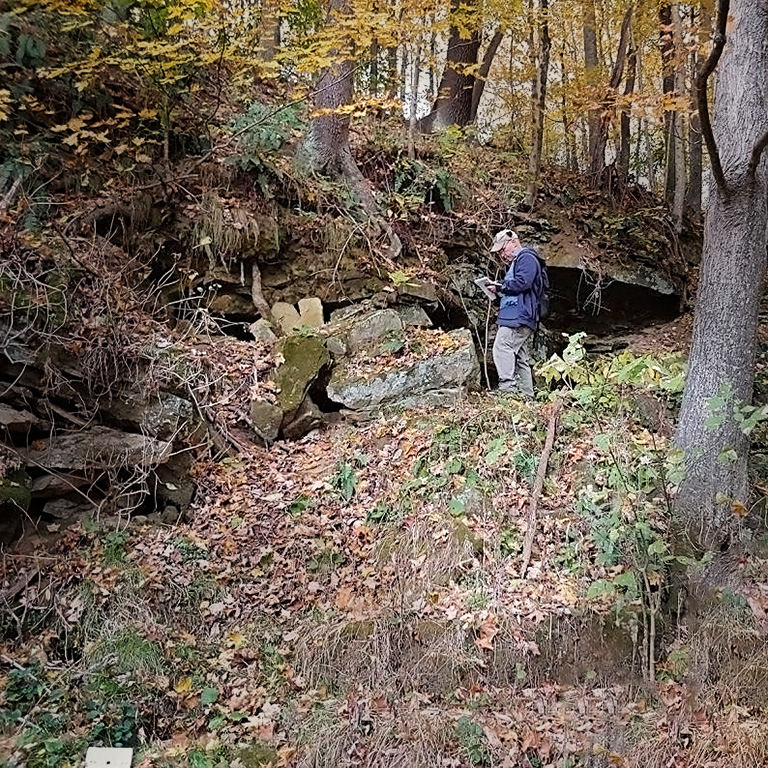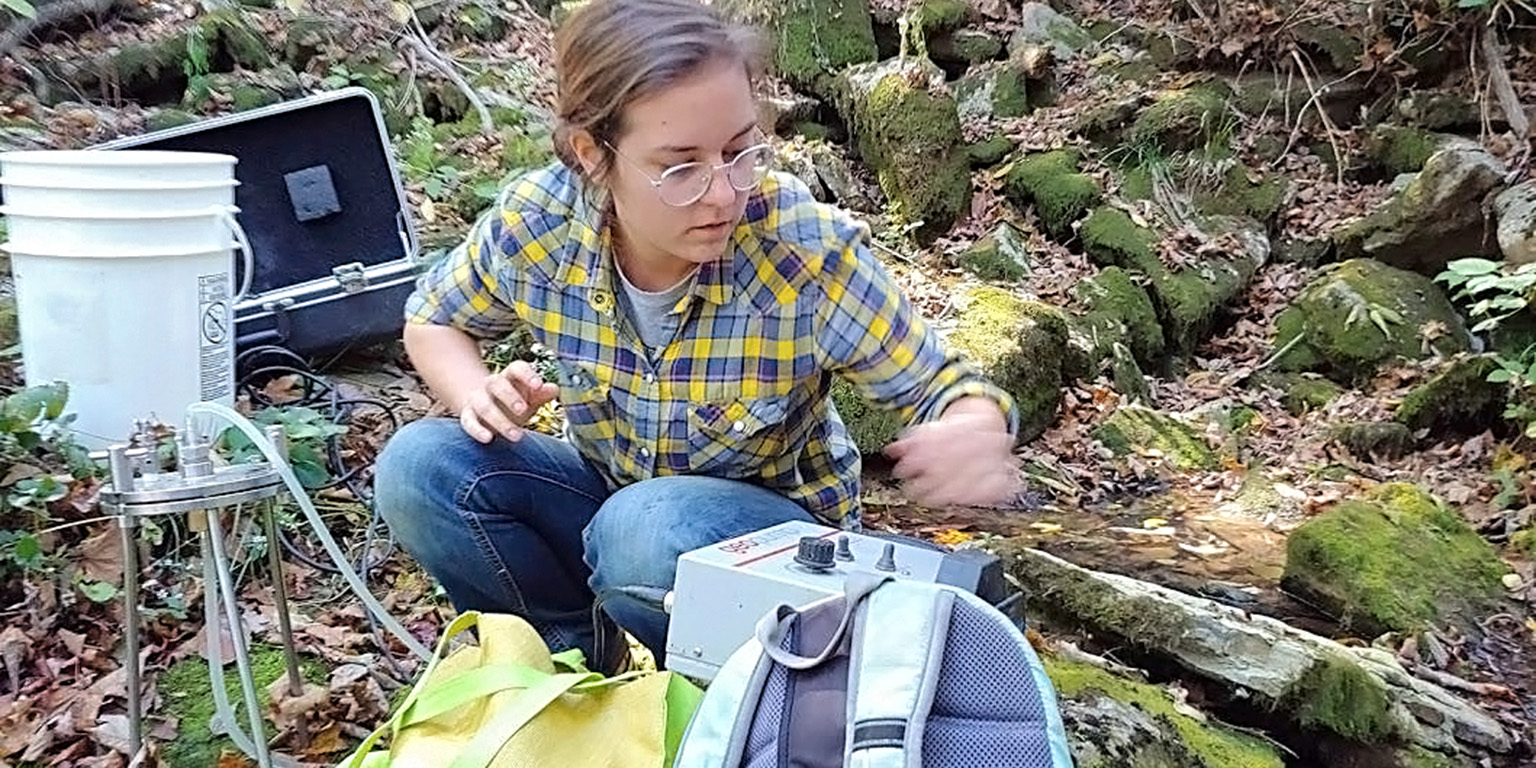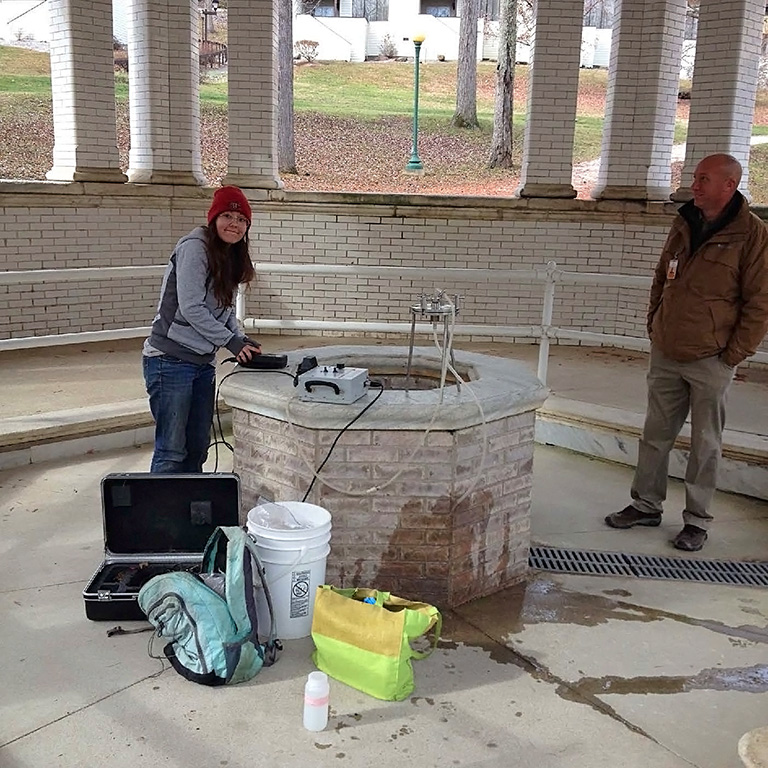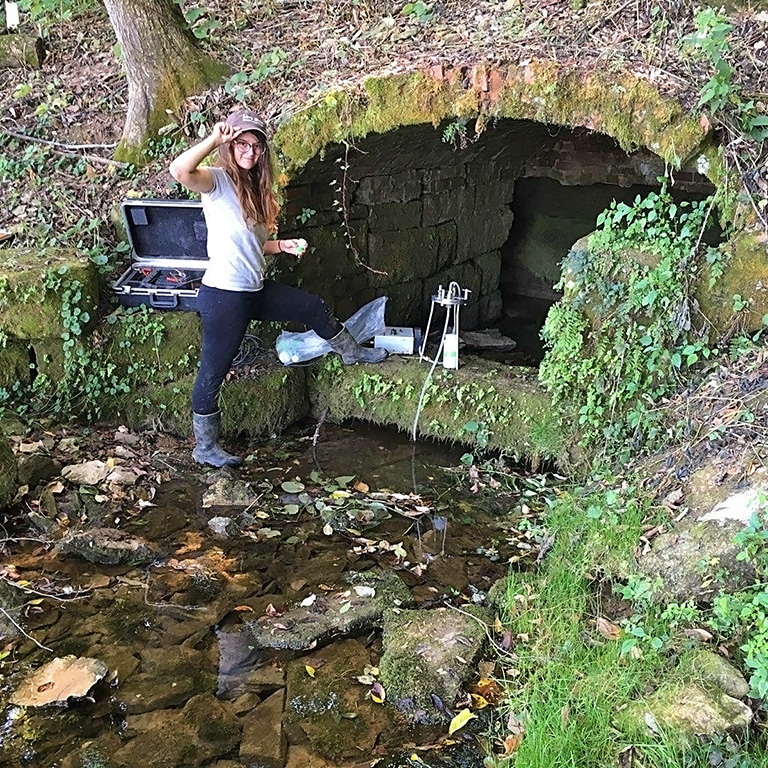An IU research team investigates 100 springs—some famous and some unknown—across the Indiana Uplands region.
Natural springs have played an important role throughout the history of Indiana, yet for many of the springs, little is known about the specific characteristics. In partnership with the Center for Rural Engagement, a team of researchers from the Indiana Geological and Water Survey (IGWS) is hoping to uncover some of those secrets held in the springs of the Indiana Uplands to better understand the past and future of these water sources.Tracy Branam is a scientist with IGWS and is directing a research project to collect data about the location, chemical composition, and water quality of 100 perennial springs in the eleven counties that make up the Indiana Uplands region. “I first became interested when reading a [1901] report by the former state geologist William Blatchley,” he says. “At the time mineral springs were very popular and provided a sizable economic industry to the state.” Historically, springs have been the source and site of economic growth, providing power to gristmills, drinking water, and agricultural irrigation to the towns that grew up around them.
Even today, many of these springs provide water in areas with limited groundwater resources, says Branam. Some uses include drinking water for people and livestock, recreation, and even bottling. “Many of these uses depend on water quality and character,” says Branam, but there’s never been a large-scale collection of that data. Branam and his team hope to change that.






